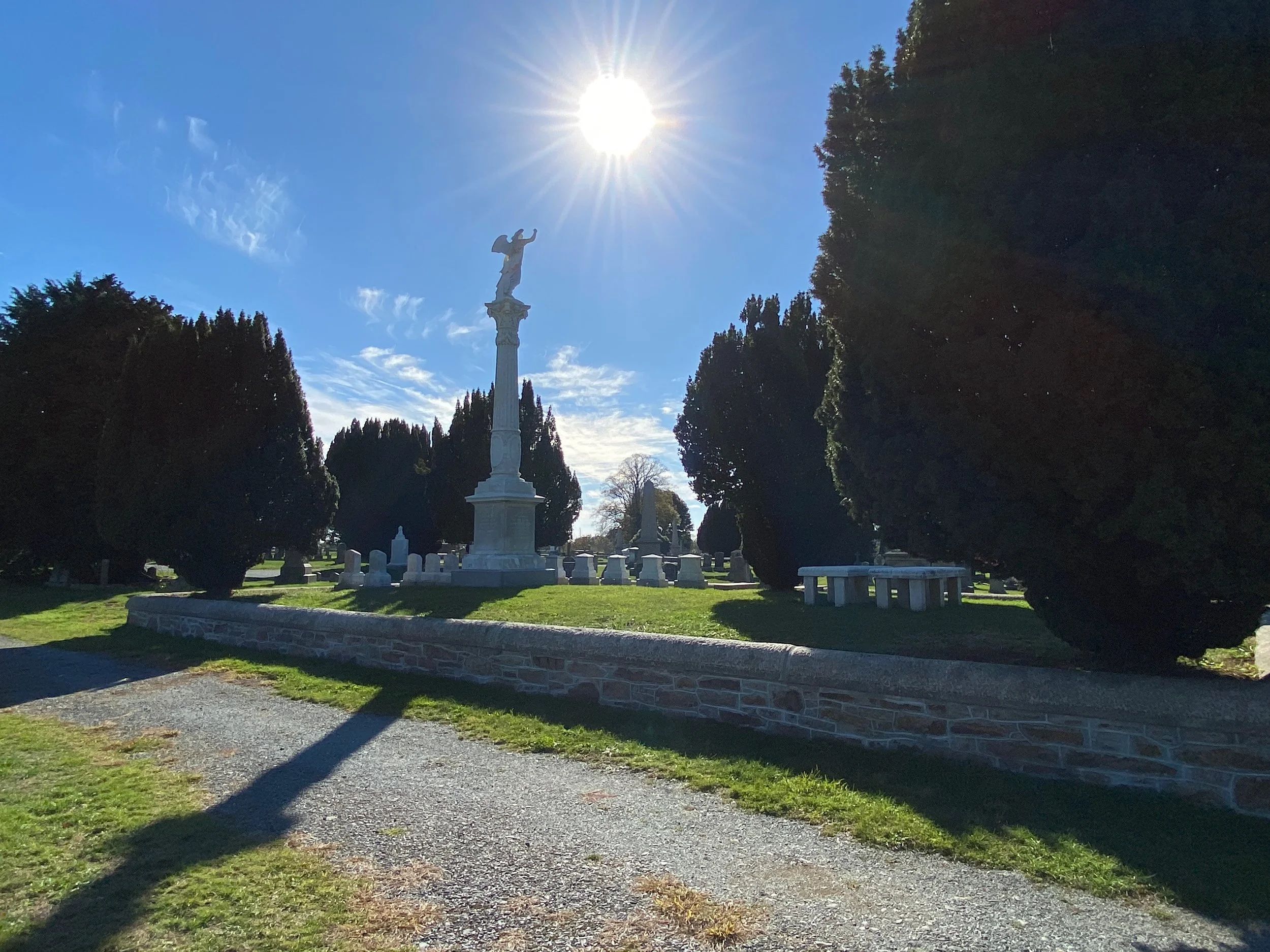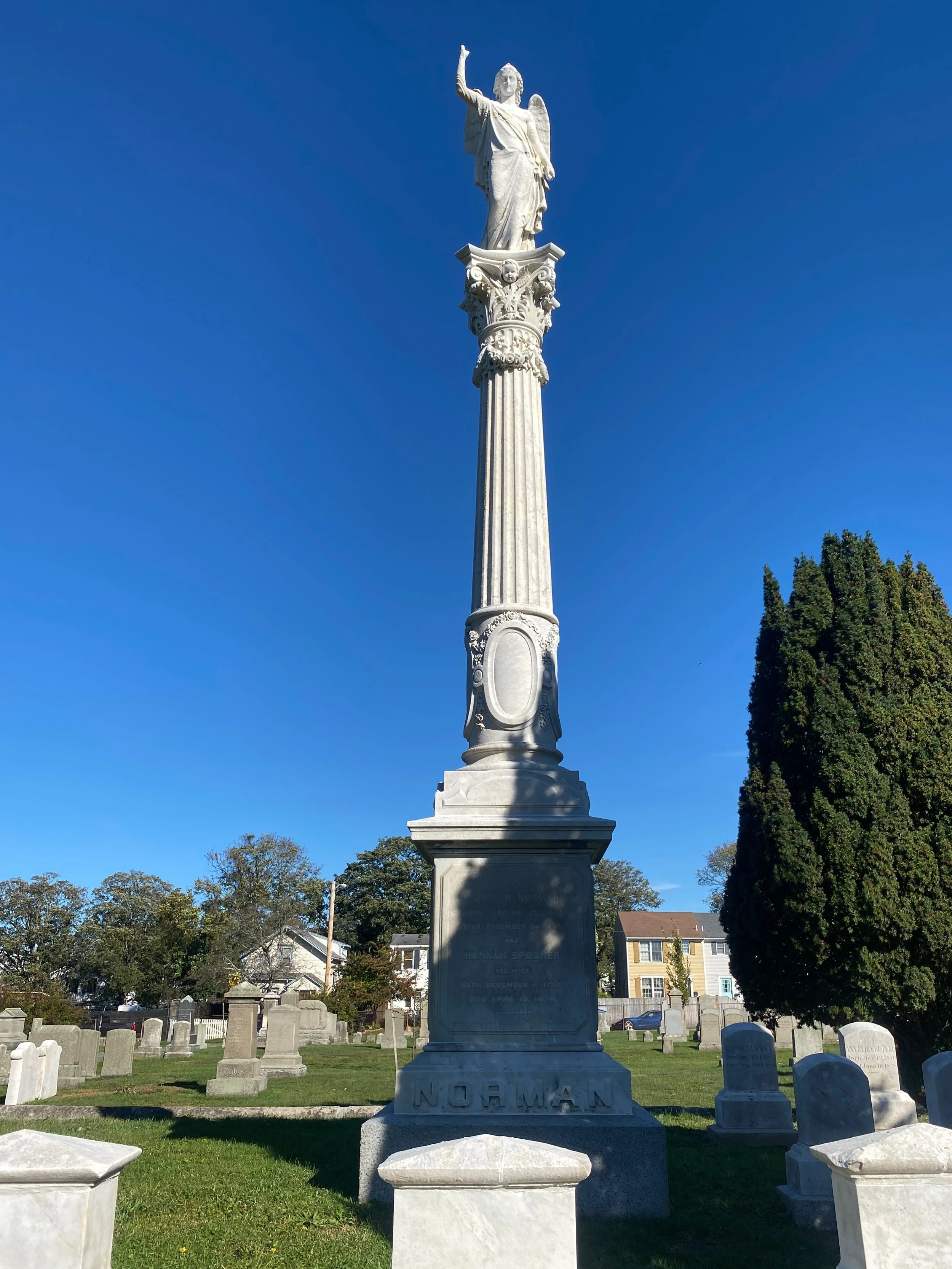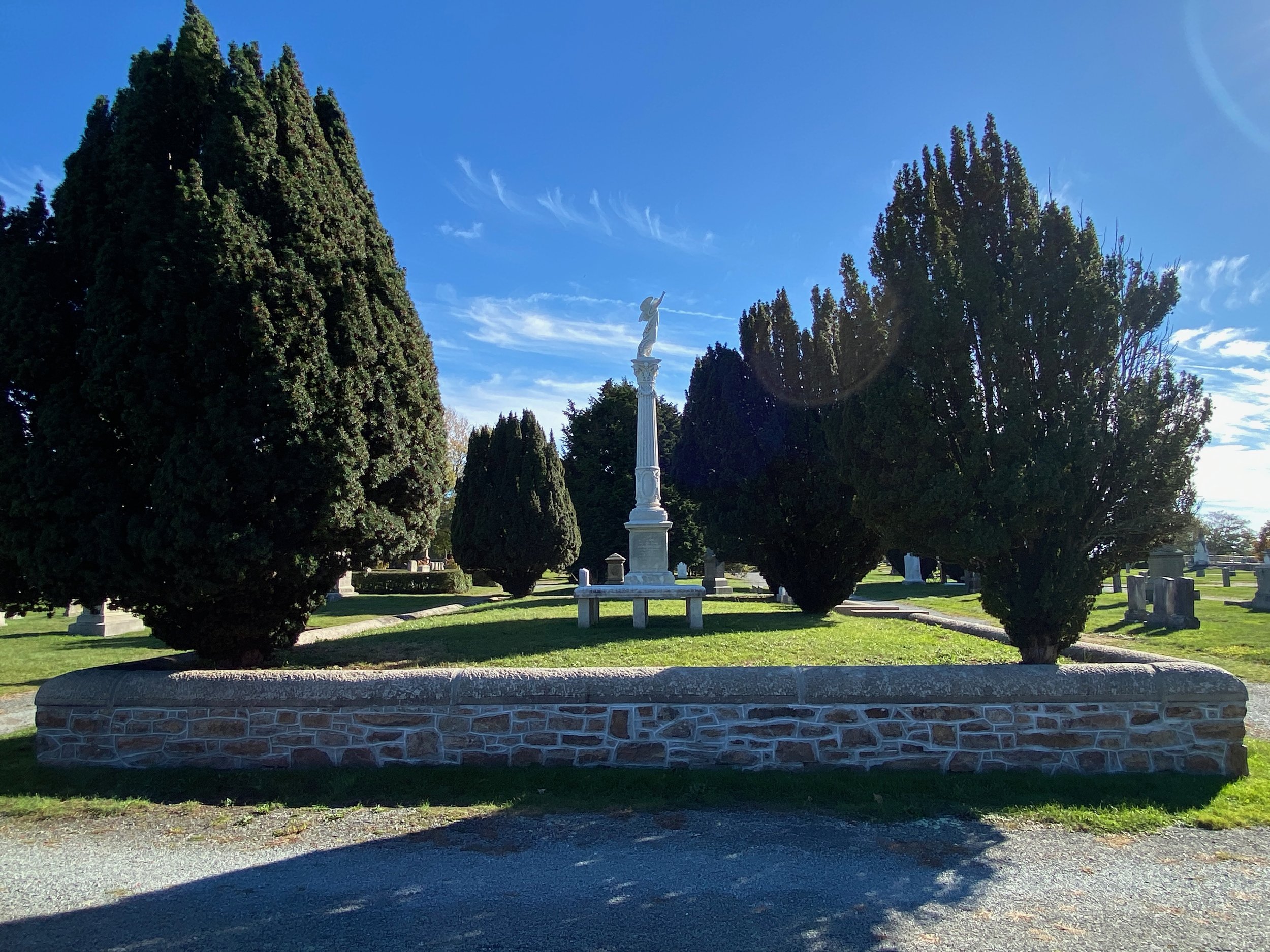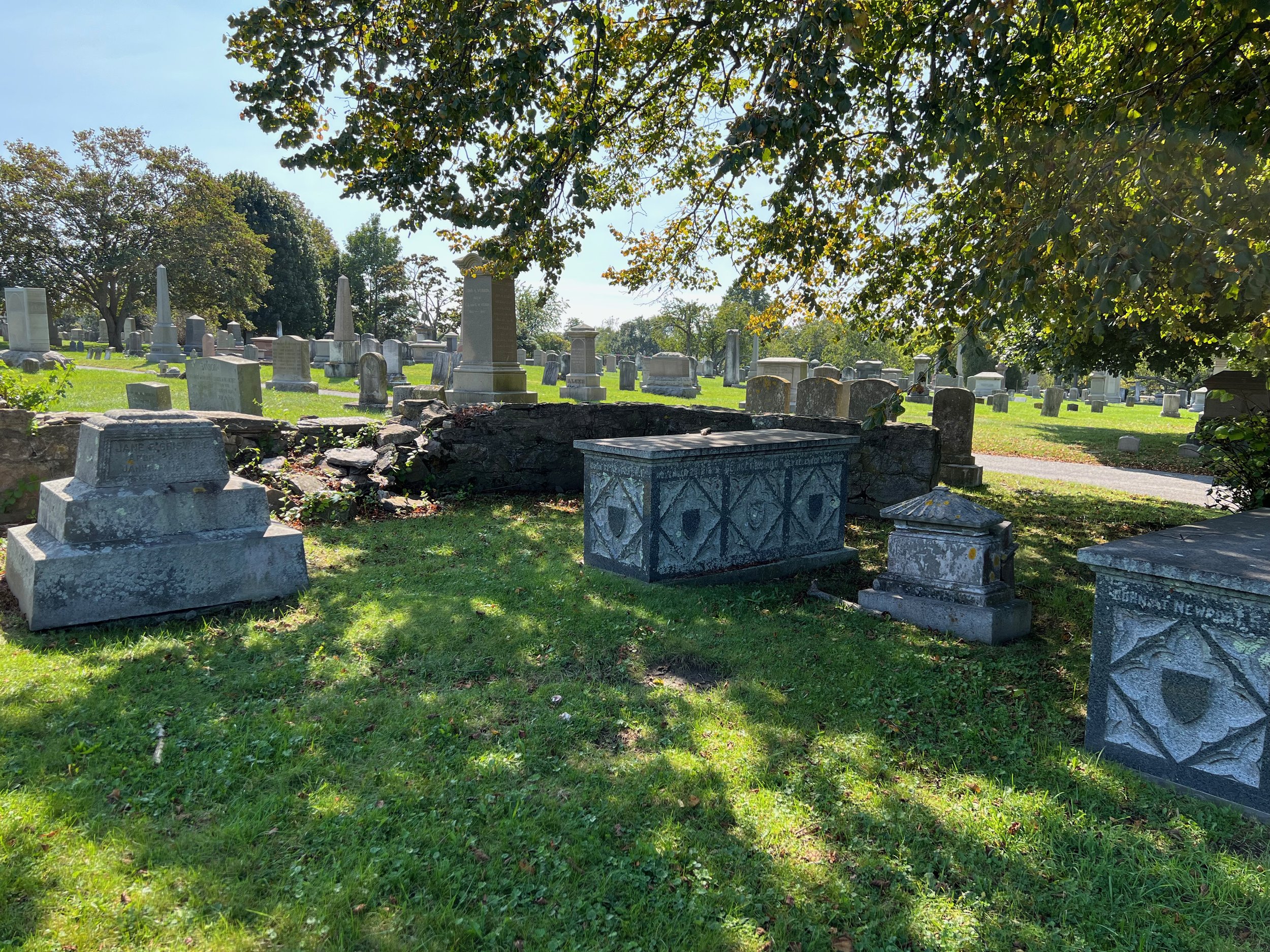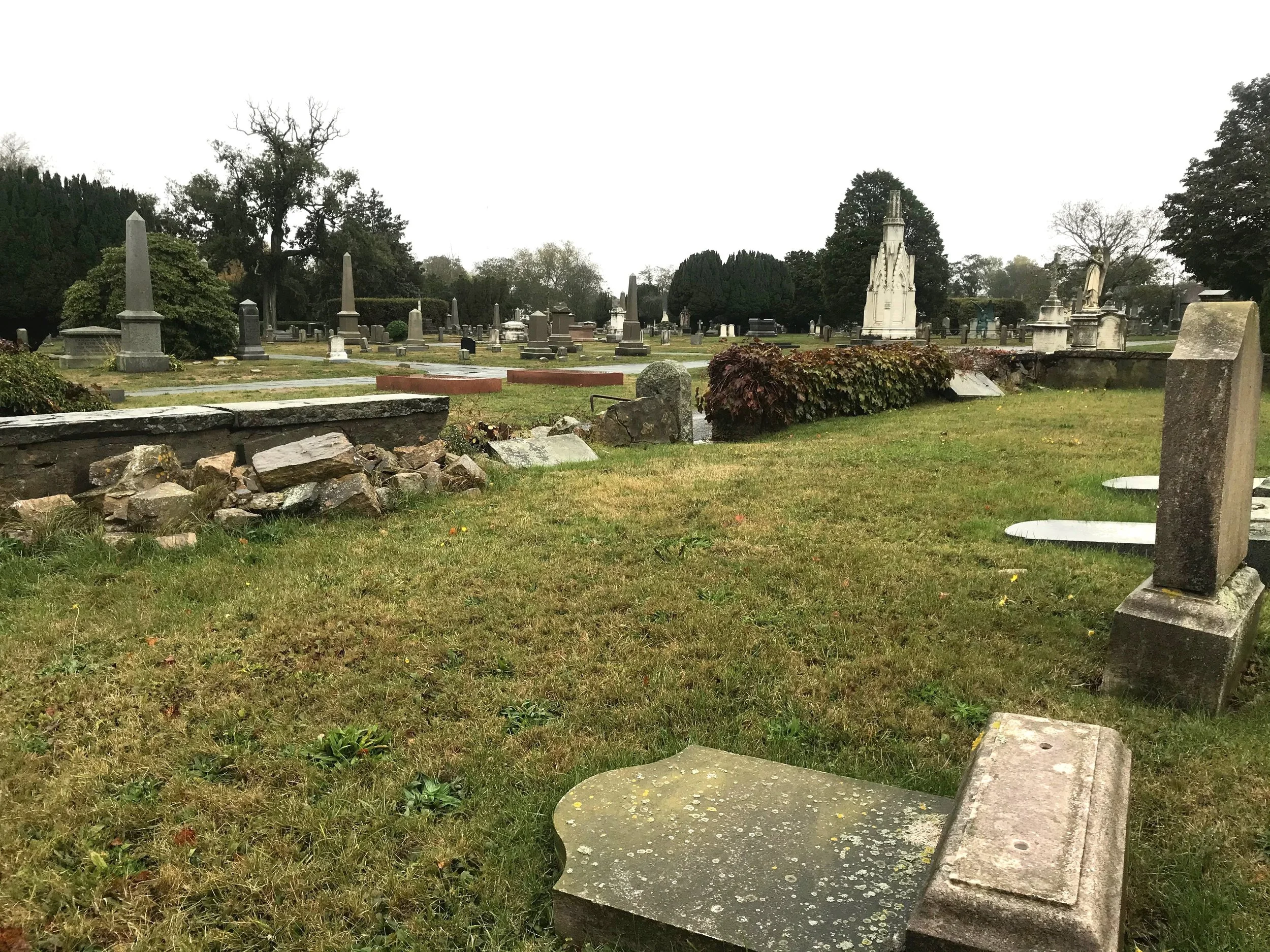Horticulture and Urban Ecology
The Island Cemetery was part of the early movement in America towards landscaped, park-like cemeteries. There are many beautiful specimen trees, bushes and plantings that have survived throughout the years and add to the beautiful grounds and also to the City of Newport’s Arboretum. Island Cemetery is partnering with the Newport Tree Conservancy and will become an accredited arboretum this year. We are focusing on sound horticultural strategies that adhere to best practices in urban ecology. We survey our collection of trees and bushes yearly to determine what needs to be removed and/or replaced. As we develop and maintain areas in the cemetery, we strive for responsible water use, preventing erosion and sediment, and maintaining the health and sustainability of the urban forest.
In addition to the Newport Tree Conservancy, we enjoy partnerships with our local landscape companies who are always on hand to contribute time and resources to our grounds projects.
Special Projects
Plant a Tree
Make a lasting memorial to a loved one with our Plant a Tree Program while helping us to expand our arboretum and the canopy coverage on our grounds.
At its establishment in 1848, Island Cemetery was designed to be a garden cemetery, a serene sanctuary and patch of nature nestled in its urban site in the Point section of Newport. As part of our Horticultural Special Programs we are introducing a Plant a Tree Program.
Our tree planting goal specifies adding trees in the Spring and Fall seasons. In 2021, we planted 6 Stewartia and 1 Chestnut tree in our newly developed Cedar Way I cremation walk, as well as, 2 Variegated Sweetgum trees in the Belmont Circle. In 2022, we planted 5 Hawthorn trees along the wall at the Griswold lot. In the Spring of 2023, we planted 8 Red Maples along the Belmont Allee, and for this Fall season, we will plant 5 trees along Cedar Way II including 3 Yellowwood and 2 Sophora Japonica.
We are offering you an opportunity to memorialize a loved one while making a tax deductible donation to Friends of Island Cemetery. A bronze plaque marker, rectangular in shape with raised lettering honoring the designated person will be placed with the tree.
For more information, call 401-846-0432 or email betsey@islandcemeterynewport.com
Preservation
Many of the lots in the cemetery consist of various degrees of size and all require some form of preservation. The area in the cemetery that is one of the most in need of preservation is adjacent to the Belmont chapel called Millionaires’ Row. This area adds to the historical importance of the Garden Cemetery design following a movement in the latter half of the 19th century which transformed graveyards into a more park-like setting to give a more appealing place to visit loved ones.
Preservation of Historical Lots
Millionaire’s Row consists of notable members of Newport society along with monuments designed by various artists and architects such as Richard Morris Hunt. This important area to the cemetery proves to be the most time consuming and difficult to maintain as many of the lots were designed over 100 years ago with various hardscaping of granite curbing and borders, and plantings of trees and shrubbery. The hardscape that include curbings and elaborate monuments in these lots are part of the original design. The decades of northeast weather patterns have caused the curbings and monuments to shift and become displaced. The plantings have now all grown to be mature and in need of constant maintenance.
There are many markers and monuments on the Island Cemetery grounds in need of various types of restoration and preservation, from simple cleaning to remove algae and mold to lifting into position and fixing broken parts. We have highlighted six of the most visible below, but donations to our general fund are used to tackle others that are brought to our attention.
Donate to our Special Projects
Choose the project you would like to support by clicking on the down arrow to the right of the Special Projects heading. Any and all contributions are welcomed and will be put to good use.
Griswold
The Griswold lot is surrounded by a low stone wall that is crumbling and in need of masonry repair. In addition, several markers have broken apart and need to be rejoined.
John Noble Alsop Griswold was an Old China Trade merchant. The John N. A. Griswold House on Bellevue Avenue was designed by Richard Morris Hunt in the American Stick style, one of Hunt's first works in Newport. The house was added to the National Register of Historic Places in 1971, and was designated a National Historic Landmark in 2000. It is now one of the galleries of the Newport Art Museum, and is a project of Save America’s Treasures.
Donations to the restoration of this lot, which is in a central location in the cemetery are greatly appreciated and can be made by using the donation form above.
Kane Lot Markers and Stone Wall Surround
The lot contains the remains of the Kane family. DeLancey Astor Kane (August 28, 1844 – April 4, 1915) was an American soldier and horseman who was prominent in New York Society during the Gilded Age. He was known as the father of coaching (the sport with carriages and horses), an avid yachtsman, and once a president of the New York Yacht Club.
Located in the center of the cemetery and highly visible, this once beautiful garden lot is in need of restoration. The markers on the family’s graves have toppled and require righting and cleaning. The stone wall surrounding the Kane lot is crumbling and each year sees more deterioration.
The Friends of Island Cemetery, a 501 (C) (3) established the Kane Lot Restoration Fund for the purpose of restoring and maintaining the historic lot designed by the Kane family. To donate directly to the fund, click on the link above. Your donation is 100% tax deductible.
We have had fencing installed to prevent injury to visitors from the deterioration to the wall and to deter potential vandalism. The stones will be uprighted in 2026 thanks to the generous support of the Phelps family, descendants of Delancey Astor Kane. Without further funding, it may be necessary to remove the wall and replace with privet hedges.
Memorial Circle - Travers Circle Curbing Surround
The Travers family gravesites are marked with rectangular granite slabs. William Riggin Travers (July 1819 – March 19, 1887) was an American lawyer who was highly successful on Wall Street. A well-known cosmopolite, Travers was a member of 27 private clubs, and a member of the Gilded Age clique of influential millionaires. The Bellevue Avenue commercial block was built for William Travers and designed by Richard Morris Hunt.
The curbing around the Travers Circle has shifted causing gaps between the curbings and the uprights that form a circular boundary around the grave sites. Work is in progress to fixing the curbings and prevent further shifting and deterioration.
We are planning further development of this lovely spot that will include flowering trees around the perimeter of the circle and allow for cremation burials. Donate to this development project by using the form above and enjoy the resulting Memorial Circle.
August Belmont Monument
This impressive marble monument, marking the Belmont/Perry Circle was designed by Richard Morris Hunt. It is in need of masonry repairs and repointing to prevent the marble blocks from falling and causing further deterioration to the structure. Donate to help to fund this important restoration.
August Belmont, one of the richest Americans of his day, was a fixture of New York’s high society, and his lavish lifestyle reportedly inspired the character of Beaufort in Edith Wharton’s The Age of Innocence (1920). He was also a prominent figure in the establishment of Thoroughbred horse racing in the United States as a major financer of the first Belmont Stakes, part of the trio of races that compose the American Triple Crown. The event was subsequently named in his honour.
Donate to this restoration by selecting this project in the form above.
Wetmore & Sherman Lot
The Wetmore & Sherman lots are two connected lots representing the interrelationships of two of the aristocratic families of the Gilded Age who lived and vacationed in Newport in the historic Chateau-sur-Mer. Annie Derby Rogers Wetmore (1848–1884), daughter of William Shepard Wetmore (1801–1862) and sister of Sen. George Peabody Wetmore married William Watts Sherman. The William Watts Sherman House on the Salve campus is considered a landmark and is on the National Register of Historic Sites.
The George Wetmore has an impressive classical pediment memorializing the Wetmore family. It is surrounded by a privet hedge part that also includes the Sherman lot. Island Cemetery is partnering with Elena Kissel, a descendant of both families, to renovate the expansive double lot. To help in this endeavor, donate by using the form above and selecting the Wetmore & Sherman restoration fund.
George Peabody Wetmore (August 2, 1846 – September 11, 1921) was an American politician who was the 37th Governor of, and a Senator from, Rhode Island. Elena Kissel’s brother-in-law, Sheldon Whitehouse, is currently the senator for Rhode Island for Congressional District 1.
George Norman
The tallest monument in the cemetery is a 30+ foot fluted column terminating with a winged toga-clad angel standing on a capital. The weather has caused the column to shift on its base and the base shows signs of cracking making a large-scaled masonry repair necessary. In addition, there is a wall surround that is in need of repointing.
George Norman made a fortune installing utilities in many places including the water system in Newport. This large family lot is centered on the 30+ foot fluted column that terminates with a winged toga-clad angel standing on a capital. Additional classic design elements include garlands of flowers. Table tombs and head and footstones indicate the burial location of the members of the family.
The Prince Foundation, Lisette Prince de Ramel, Guillaume de Ramel, Regis de Ramel, and Diane Orly contributed funding to restore the statue and the pediments surrounding this historic lot. The project has begun and should be completed by summer. The work includes major repositioning and refastening the statue on the pedestal to prevent further twisting that has been observed as well as repointing of the pediment, wall and cleaning of the markers on the lot.





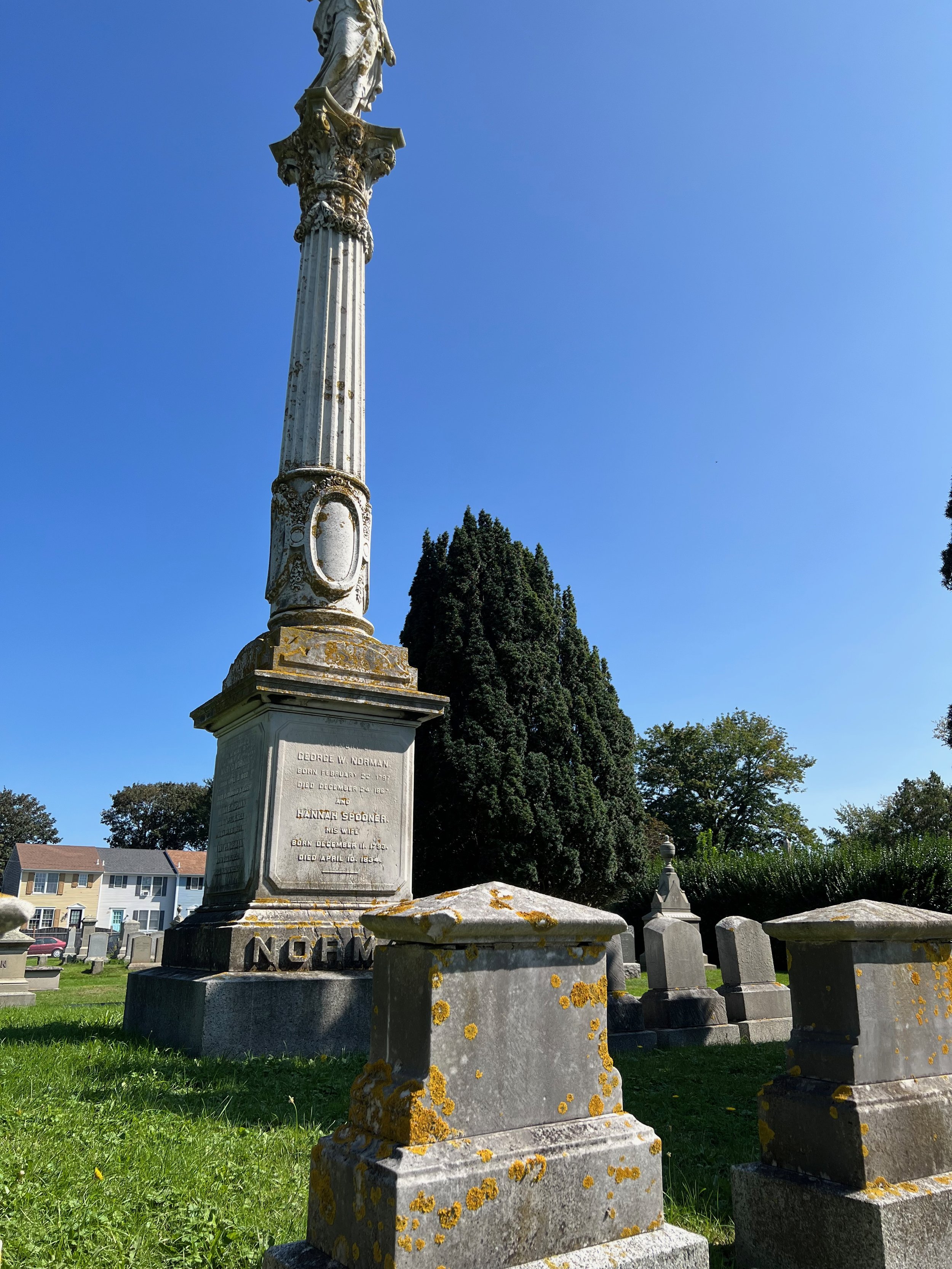
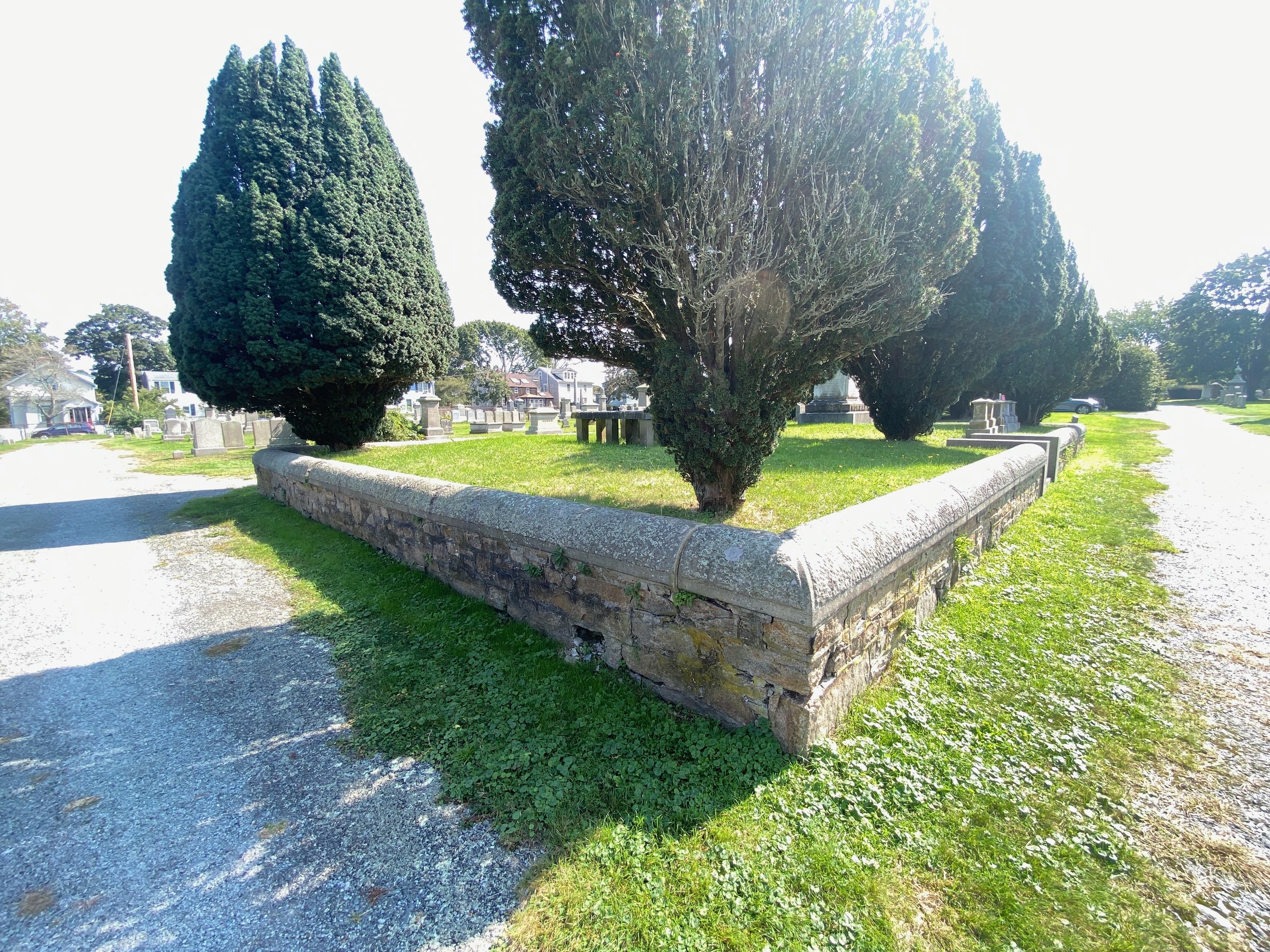
UPDATE
The restoration of the Norman lot has been completed thanks to the generosity of the Prince Foundation, Lisette Prince de Ramel, Guillaume de Ramel, Regis de Ramel, and Diane Orly. The Damon Company and mason Al Devellis provided the labor for the this project.


